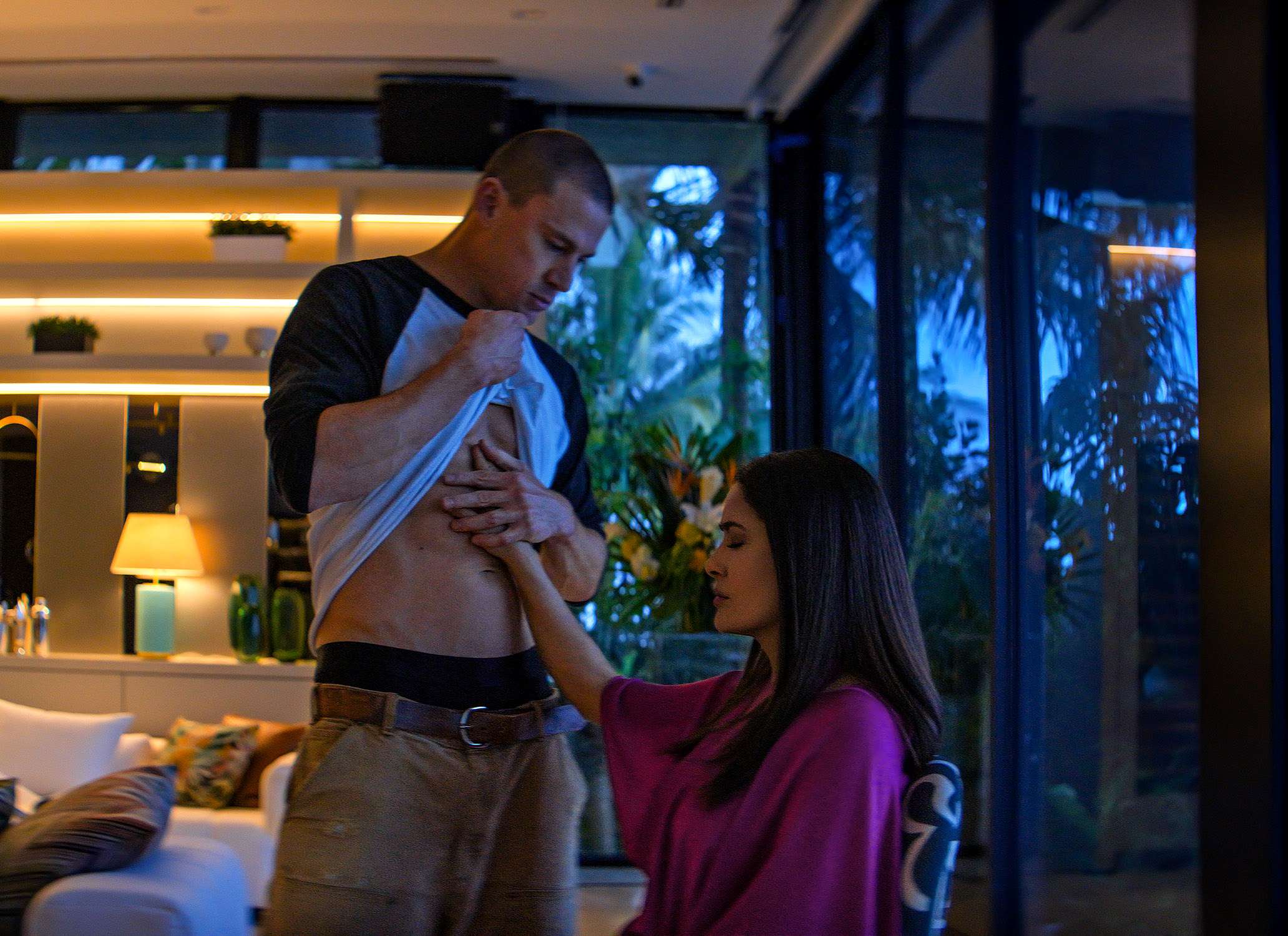of course, Magic Mike’s Last Dance It’s about muscular male dancers, about the fantasy of female empowerment, about cover models – groomed guys with their shirts off and grinding, compliantly, with tittering, downtrodden, mostly middle-aged women who, it seems, the movie should treat. Glazed hunks of movie beefcake as a sort of healing serve.
But would you believe it’s also about… a stripper fighting the perils of politically controlled historic preservation and zoning regulations?
I’m definitely not kidding.
Like its predecessors, Magic MikeAnd Magic Mike XXL, Magic Mike’s Last Dance follows Channing Tatum’s Mike Lane, a ripped and suave stripper who dreams of nothing more than running his own business, a custom furniture store in South Florida.
As the movie begins, his business has been decimated by Covid-19, and he’s back to gig work as a bartender for catered events. At one such gig, he meets Maxandra Mendoza (Salma Hayek Pinault), a middle-aged woman whose wealth comes largely from her husband’s family. Mendoza’s husband, however, recently cheated on her with a younger woman. Thanks to a prenup, the divorce will leave her broke, so she seeks other means of revenge: specifically, after a spectacular personal lapdance from Mike, he hires her to conduct a male stripper revue at a storied-but-stuck old London playhouse—a Khelagarh cares quite a bit about her rich, stuck-up husband but can’t legally control herself.
In short, it is a woman centric version “Instead of going to therapy” meme: Women will literally hire a random Florida stripper to stage a male revue at a historic playhouse to avoid therapy.
As far as plot premises go, it’s thin and somewhat ridiculous, but it does set up a mid-film conflict involving London’s famously raucous, famously political restrictions on building change. In order for Mike’s show to work, it turns out, the playhouse must be modified by building a new, enlarged stage from the old structure.
And those changes, it turns out, triggered a legal investigation from the local Historical Review Board, which, to convince viewers, is acting at the instigation of Mendoza’s husband, who is using his political connections to try to shut down the show.
In some ways this is a minor point, although it does lead to one of the worst scenes in the movie, where the dancers stage a private show for the bureaucrats in charge of approving commercial changes: as it turns out, she’s also a downtrodden, middle-aged lady, and she’s their step. won by One of the funniest gags in the movie is a direct cut from the climax of the city-bus dance to the stamp of approval on the building alteration papers.
But the building code issues don’t stop there: Even after the initial approval, it appears there are still problems. Amla returned to the stage with a stack of papers: apparently, the new stage was still three-quarters of an inch too high. She is approached by a Member of Parliament – apparently at the behest of the angry husband. What can he do? The movie’s answer amounts to: dance, enjoy yourself, release yourself from the constraints of everyday life and don’t worry about it.
This is probably good life advice. But as a practical solution to the problem of unwieldy urban zoning and building regulations, it leaves something to be desired.
Yet as a political analysis, it’s surprisingly on point: Zoning and historic preservation rules aren’t just bureaucratic nuisances—they’re often used by politically powerful naysayers to stop projects over which they have no direct authority, but dislike for personal reasons. In movies as in the real world, urban zoning and historic preservation regulations are weapons employed by local sourpuss to keep other people from engaging in interesting, innovative, and unusual activities, whether for fun, profit, or both. You can’t build it Another way of saying it you can’t do it
As the movie progresses, Magic Mike’s Last Dance Nonsensical, and none of the main story holds up. It’s also surprisingly enjoyable, because of how intensely observed it is. The franchise is often understood as a kind of broad, campy, female empowerment fantasy, and it certainly plays into that perception: if you want to hoot and holler at the modern-day Chippendales, this film will serve that sentiment. But there’s more going on, at least at the margins. Director Steven Soderbergh, who also directed the first installment, keeps the proceedings grounded and lived-in: It’s not realistic, exactly, but like the first film, which was set against the economic backdrop of quaint, working-class Tampa, Florida, it often feels like it. As if it’s populated by something like real, ordinary people who have to deal with real, ordinary issues like zoning and historic review boards.

